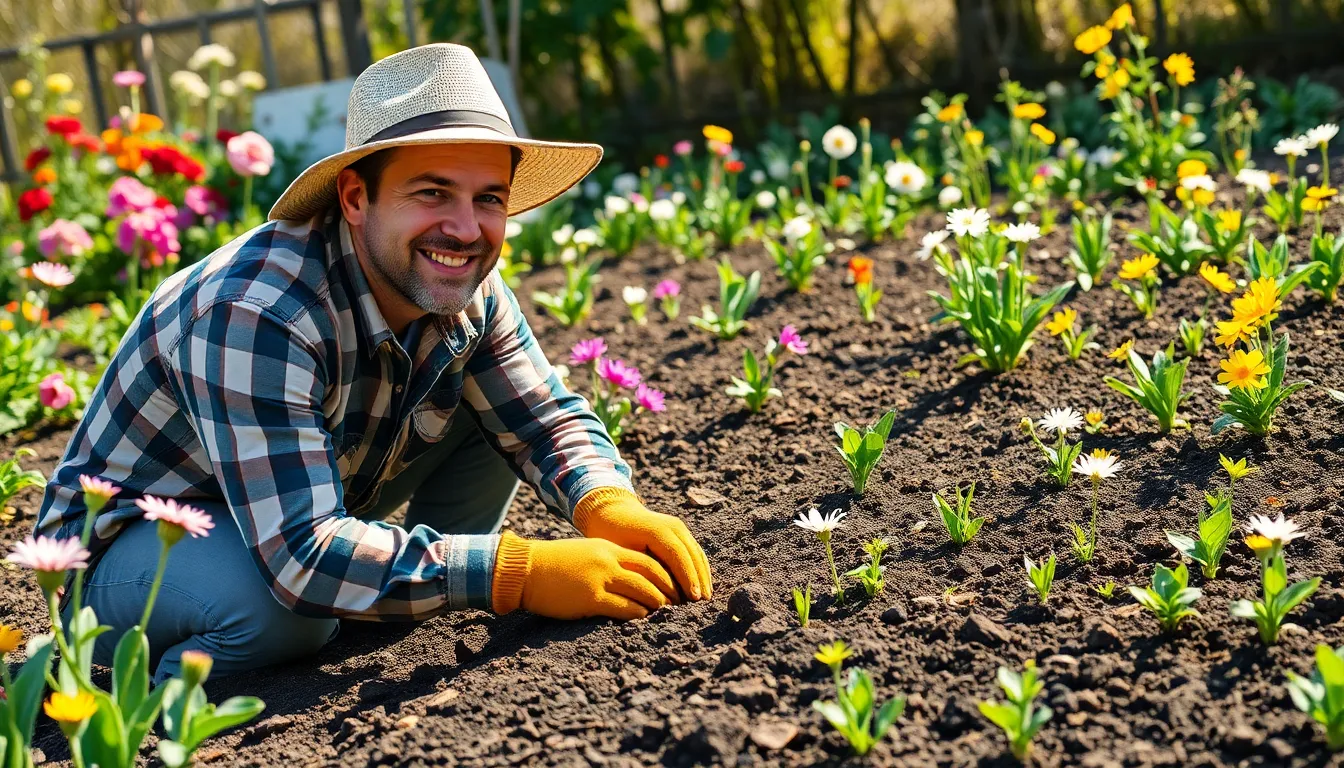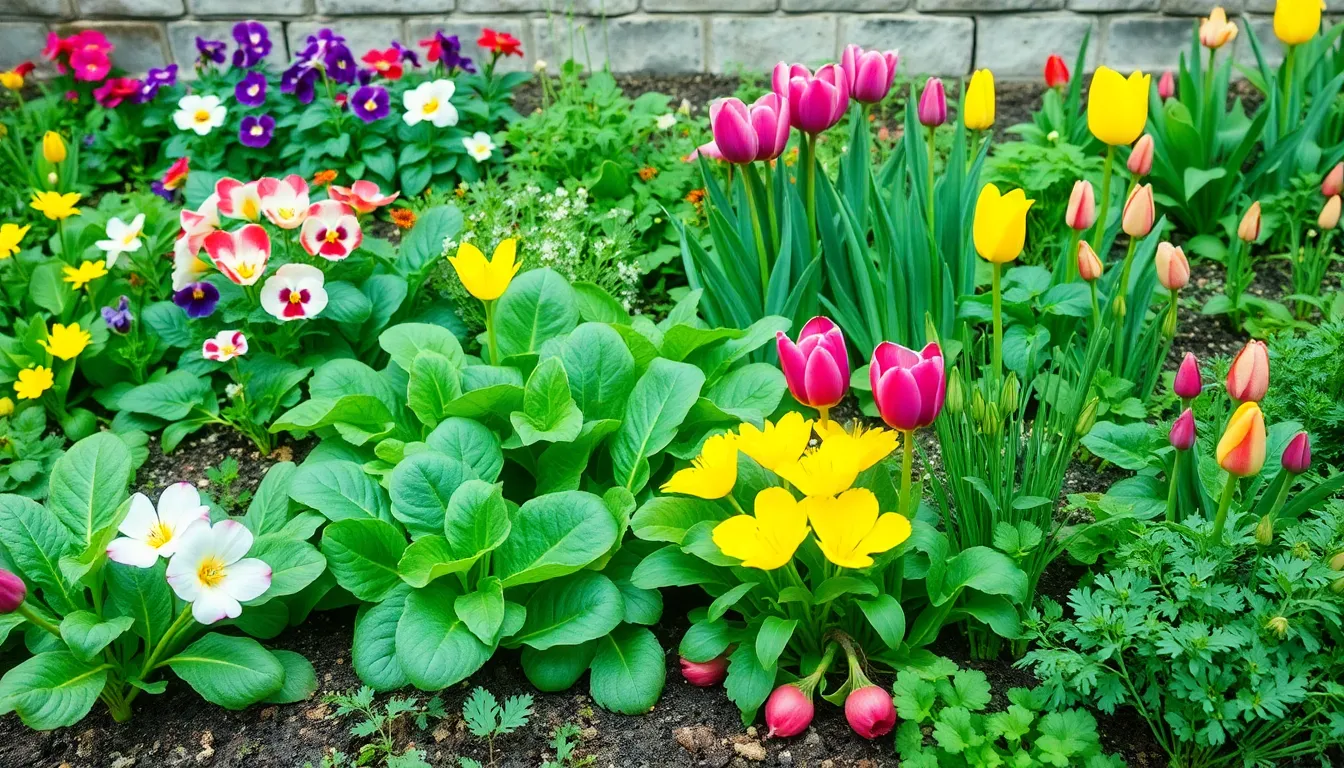Physical Address
304 North Cardinal St.
Dorchester Center, MA 02124

As winter reluctantly releases its grip, gardeners everywhere feel a familiar itch to dig their hands into the soil. Spring planting isn’t just a chore; it’s a glorious celebration of life bursting forth from the earth. With warmer days ahead, it’s time to swap those heavy winter coats for sun hats and gardening gloves.
Gardeners enjoy several advantages when engaging in spring planting. Spring provides optimal conditions for growth and health.
Soil temperature rises during spring, creating ideal conditions for planting. Microbial activity increases as temperatures warm, enhancing soil health. Nutrient availability also improves, benefiting plant growth. Many gardeners amend soil with organic matter in early spring, which boosts fertility. Moisture levels remain adequate, supporting seed germination and root establishment. These factors create an environment where plants thrive aggressively.
Spring planting promotes vigorous plant growth due to abundant sunlight and warmth. Increased daylight hours help plants photosynthesize more effectively, leading to faster growth rates. Young plants establish stronger root systems during this time, making them more resilient. Many varieties of vegetables and flowers perform best when planted in early spring. Rapid growth results in larger yields for gardeners who take advantage of this season. Additionally, pest and disease pressures often remain lower in spring, allowing plants to develop healthily.

Spring provides an excellent opportunity for various plants to flourish. Selecting the right plants maximizes growth and yield.
Cool-season vegetables thrive in early spring. Planting peas, spinach, and radishes ensures quick germination and steady growth. Broccoli and lettuce also benefit from mild temperatures. These vegetables withstand light frosts, allowing gardeners to harvest earlier. Additionally, planting carrots during this time results in sweet, tender roots. Early spring planting provides an efficient way to maximize space and succession planting.
Spring planting brings vibrant colors to gardens. Pansies, snapdragons, and violas can withstand colder temperatures, adding blooms before summer. These flowers provide essential nectar for pollinators as they emerge. Planting petunias also enhances garden aesthetics with a variety of colors. Furthermore, daffodils and tulips emerge early, announcing the arrival of spring. These hardy flowers contribute to a lively outdoor atmosphere.
Herbs flourish with the arrival of spring. Chives, parsley, and cilantro thrive in cooler conditions, adding fresh flavors to dishes. Planting mint yields fragrant leaves that can enhance beverages and meals. Additionally, basil can be sown indoors for later transplants outdoors as temperatures warm. Oregano and thyme also perform well, providing essential culinary herbs. Choosing these herbs ensures a bountiful garden throughout the growing season.
Successful spring planting requires careful attention to preparation and techniques. Proper methods yield healthier plants and larger harvests.
Soil preparation is crucial for optimal plant growth. Testing soil nutrients allows gardeners to understand how to amend it effectively. Organic matter, such as compost or well-rotted manure, enriches soil fertility. Aerating the soil promotes better drainage and root development. Removing weeds and debris reduces competition for nutrients. Finally, tilling the soil enhances its texture and supports microbial activity, fostering a healthy environment for plants.
Watering techniques significantly impact plant health during spring. Early morning watering allows moisture to penetrate before the heat of the day. Using soaker hoses or drip irrigation minimizes water waste while delivering hydration directly to plant roots. Checking soil moisture levels with a fingertip ensures adequate watering without over-saturation. Mulching retains soil moisture and regulates temperature, which benefits young plants. Adjusting watering frequency based on rainfall and temperature supports optimal growth and minimizes stress on plants.
Spring planting presents challenges that gardeners often encounter. Awareness of these issues helps in planning effectively for a successful gardening season.
Gardening during spring brings increased pest and disease activity. Common pests like aphids, snails, and caterpillars emerge as temperatures rise. Symptoms of pest infestations appear quickly on vulnerable plants. Implementing preventive measures such as row covers and companion planting helps reduce outbreaks. Disease pathogens, including powdery mildew and blight, thrive in warmer weather. Proper spacing and good air circulation around plants can mitigate these risks. Additionally, rotating crops each season supports soil health and limits disease transmission.
Weather fluctuations create unpredictability for spring gardeners. Sudden temperature drops can stress young plants, harming their growth. Frost events may occur even in late spring, so monitoring forecasts remains crucial. Rain showers may lead to soil saturation, which can cause root rot. Choosing resilient plant varieties that withstand varying conditions can make a difference. It also helps to use protective coverings, such as cloches or frost blankets, to shield plants from unexpected conditions. Understanding local climate patterns equips gardeners to plan for these fluctuations effectively.
Spring planting brings a sense of renewal and excitement for gardeners eager to cultivate their green spaces. With the right preparation and care, this season offers a unique opportunity to grow a diverse array of plants that flourish in the warming soil. Embracing effective watering techniques and soil enrichment can lead to bountiful harvests and vibrant blooms.
As gardeners navigate the challenges of pests and unpredictable weather, selecting resilient varieties and employing smart strategies will ensure a thriving garden. The joy of watching plants flourish is a rewarding experience that makes spring planting a cherished time of year.